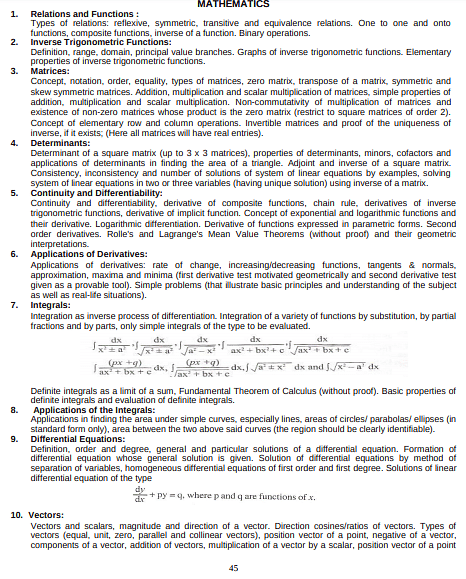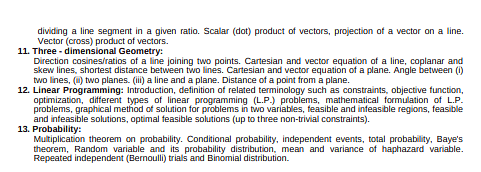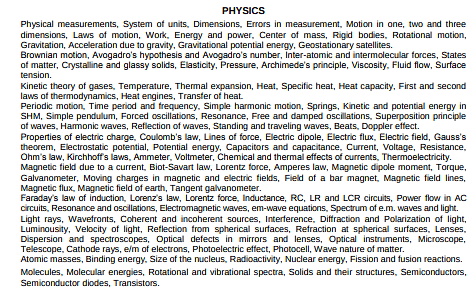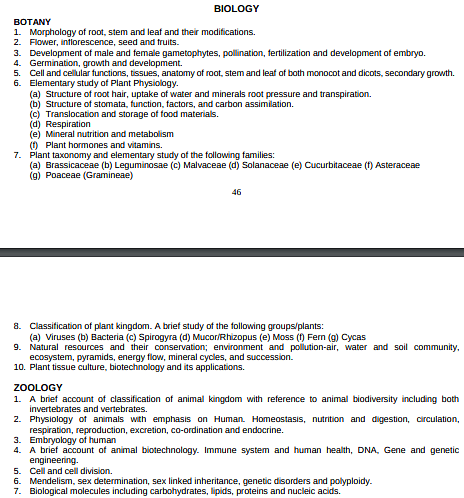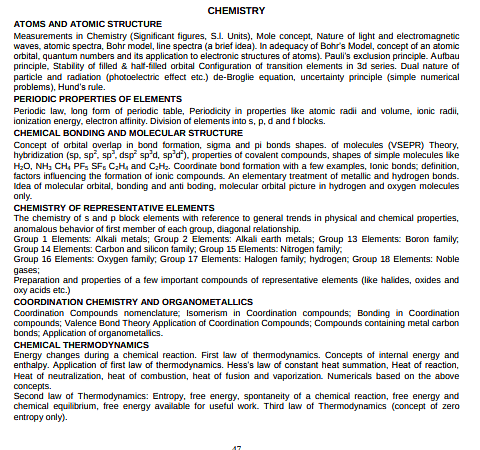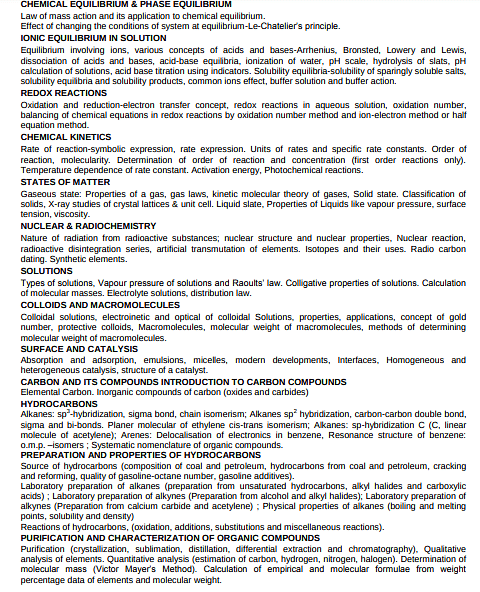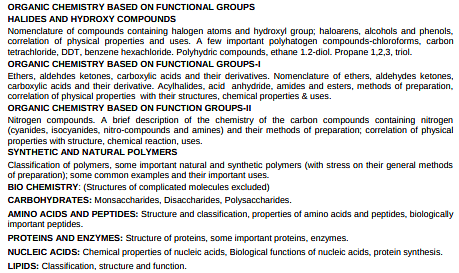1 | Gradient, Divergence and Curl of Vector fields, Gauss‟s, Stoke‟s and Green‟s theorems. Newton‟s laws, Galilean invariance, Non-relativistic motion of charged particles in an electric and magnetic field, conservation of linear, angular momenta and energy, Collisions, Centre of mass frame. Inverse-square law force, Kepler‟s laws. Harmonic oscillator. Damped harmonic oscillator, Quality factor. Coulomb‟s law, field due to a charge distribution, Gauss‟s theorem and its applications, Line integral of the electrical field, electric potential, Force on a surface charge, Energy associated with the electric field. Current density, charging and discharging of a condenser through a resistance. Force on a moving charge, Fields due to a Helmholtz coil, Solenoid and a current loop, magnetic flux, Faraday‟s law in differential form, Self and mutual inductance, RL and RC circuits. Dielectrics, Moments of a charge distribution, Torque and force on a dipole in an electric field, Induced dipole moment, Polarisability, Qualitative idea about dia, para and Ferromagnetism, Magnetic susceptibility, Langevin‟s theory of paramagnetism, Hysteresis phenomenon, AC circuits |
2 | Rutherford‟s atomic model, Bohr‟s model and spectra of hydrogen atom fine structure, Sommerfield model, spatial quantization and electron spin. Normal Zeeman effect. X-ray spectra, Moseley‟s law, Luminescence, Principle and working of different kinds of Lasers, Raman effect. Laws of thermodynamics, Entropy, Cp and Cv of a gas. Macroscopic and microscopic systems, Internal and external energy states of a molecule, Reversible and irreversible processes, production of low temperatures. Maxwell‟s thermodynamic relationships, Triple point, applications of Maxwell‟s thermodynamical relations. Introduction to cryogenics and refrigeration. Black body radiation and different radiation laws. Einstein‟s theory of specific heat and its limitations, Lattice vibrations, phonons-Debye‟s theory of specific heat of solids, the specific heat of diatomic gases and its variation with temperature. Black body spectrum, photoelectric effect and Compton effect. De Broglie‟s waves, Group and phase velocities, Uncertainty principle. Schrödinger‟s equation, Operators, Expectation values. Applications of Schrödinger‟s equation and its various applications. Michelson Morley experiment, Postulates of special relativity, Lorentz transformations, Relativistic kinematics |
3 | Fermat‟s Principle, Cardinal points, telescopic combinations, Interference and diffraction of light, Rayleigh criterion, resolving power of telescope and microscope, Grating, Resolving power of a grating, Polarization and different kinds of polarized light, Double refraction, optical activity Electromagnetic theory. Kirchoff's Laws, Thevenin's & Nortons Theorems, Filters, VTVM, CRO. Semiconductor Devices, diodes and transistors, FET, MOSFETS, UJT, Thermistors, Rectifiers, Power supply. Different types transistor-based amplifiers and oscillators, Multivibrators, Logic gates and Boolean Algebra |
4 | Crystal structure, Unit cell, Bravis lattices, Miller indices, X-ray diffraction, Bragg‟s law. Lattice vibrations: Free electron theory of metals, Distinction between conductors, semiconductors and insulators, Intrinsic and Extrinsic semiconductors. Probability, Ensemble and average properties, Equilibrium and fluctuations, constraints, Equilibrium between two systems in thermal contact, the ß parameter, Entropy and probability Boltzmann entropy relation, Statistical interpretation of second law of thermodynamics. Maxwellian Distribution of Speeds in an ideal gas. Bose-Einstein and Fermi-Dirac Statistics, Free electrons in a metal, photons in black body chamber, Fermi level and Fermi energy. Structure of nucleus; Liquid drop model and semi-empirical mass formula, nuclear reactions, nuclear fission and fusion, elementary particles. Artificial nuclear transmutation, Particle accelerators & detectors, α, β, γ. decay |
5 | Real analysis: continuity and discontinuity, Reimann Integral and its applications. Algebra of integral function, convergence and divergence. Different methods in Hydrodynamics in the equation of continuity in different systems. Equation of motion and Bernoulli‟s equation with different cases. Motion in 2D and its applications. Differential and Integral calculus: successive differentiation, Different form of theorems, Tangents and normal, Maxima and Minima with different cases. Various types of integral form, Beta and gamma functions. Linear Algebra: Group, ring field, Integral domain and vector space with examples and theorems. Differential equations and Laplace transformation, vector analysis and Analytical Geometry, mechanics and complex analysis |
6 | General Statistics, Probability Distributions, Test of Significance, Analysis of Variance, Sampling Theory, Design of Experiment, Time-series Analysis, Index Numbers, Statistical Quality Control, Vital statistics, Statistical organizations in India |
7 | Introduction to computers, fundamentals, peripherals of PCs, software and Hardware. Evolution. Operating system. Structural computer Languages: programming in C, UNIX, WINDOWS Operating Systems. Number systems and computer architecture. Computational methods for Numerical Analysis: Algebraic and Transcendental equations, systems of simultaneous equations. Interpolation and Differentiation, solution of ordinary differential equations with initial value and boundary value problems |
8 | Electronic configuration of elements, periodic classification of elements, atomic number, atomic and ionic radii, ionization potential, electron affinity and electronegativity, the electronic theory of valency, sigma and pi bonds, hybridization and directional nature of covalent bonds, metallic bonds, VSEPR theory, V.B. and MO theory, ionic solids and weak interactions, Lewis and Bronsted theories of acids and bases, hard-soft acid and bases (HSAB), oxidation states and oxidation number, common oxidizing and reducing agents, Ionic equations. Natural and artificial radioactivity, radioactive decay, nuclear fission and fusion. Chemistry of the common elements and their compounds. Principles of extraction isolation (and metallurgy) of important elements. Chemistry of transitional elements, lanthanides and actinides. Structures of hydrogen peroxide, diborane, aluminium chloride and the important oxyacids of nitrogen, phosphorus, chlorine and sulphur. Interhalogen compounds. Outlines of the manufactures of sodium carbonate, sodium hydroxide, ammonia, nitric acid, sulphuric acid, cement, glass, ceramics and artificial fertilizers. Inert gases: Isolation and Chemistry, the structure of inert gas compounds. Werner‟s theory of coordination compounds, V.B. and M.O. theory of bonding in metal complexes, electronic spectrum, magnetic and spectral properties of metal complexes. Organometallic compounds. Bioinorganic chemistry, the biological role of alkaline earth metal ions, metalloporphyrins. Analytical Chemistry: Principles and methods of chemical analysis, principles involved in separation techniques, chromatography |
9 | Modern concepts of covalent bonding, bond lengths, energy and bond angles, electron displacements, inductive, electromeric, mesomeric and hyper conjugative effects, resonance ad its applications to organic chemistry, tautomerism, effects of structure on chemical reactions, dissociation constants. Mechanism of organic reactions: Types of reagents and organic reactions, reaction intermediates, product analysis, isotope effects, kinetic and stereochemical studies. 55 Stereochemistry: Optical and geometrical isomerism, chirality, enantiomers, stereogenic centres, diastereomers, resolution and racemization, relative and absolute configuration, sequence rules, E&Z and R&S nomenclature, the concept of conformation and conformational analysis of ethane, butane and cyclohexane and sugars. Chemistry and reactions of derivatives of aliphatic and aromatic compounds including Alkanes, alkynes and alkenes. arenes and aromaticity, benzene and polynuclear hydrocarbons, alkyl and aryl halides, SN1, SN2 and SNi reactions, nuclear and side-chain reactions, aromatic substitutions reactions, elimination reactions. Aliphatic and aromatic alcohols and phenols, ethers and epoxides, aliphatic and aromatic aldehydes and ketones, aliphatic and aromatic carboxylic acids and their derivatives, aliphatic and aromatic amines and amides, synthetic applications of diazonium salts. Amino-acids. Reactions and applications of organometallic compounds, Acetoacetic and malonic esters, Organic synthesis via enolates. Heterocyclic compounds, pyridine, quinoline, thiophene, furan and pyrrole. Important organic name reactions and rearrangements of synthetic importance. Carbohydrates, classification and general reactions, glucose, fructose and amino acids and proteins, terpenoids and alkaloids. Polymers, dyes and pigment. Theory and application of spectral techniques, UV, IR and NMR in structure elucidation of simple organic molecules |
10 | Elementary quantum mechanics Gaseous states: Kinetic theory of gases and gas laws, Maxwell‟s law of distribution of velocities, Van der Waal‟s equation, Law of corresponding states, Liquefaction of gases, Ratio of Cp/CV. Thermodynamics: The first law of thermodynamics, Isothermal and adiabatic expansion, Enthalpy, heat capacities, Thermochemistry –heats of reaction, formation, solution and combustion, Calculation of bond energies, Kirchhoff equation, Criteria for spontaneous changes, the second law of thermodynamics entropy. Free energy, criteria of thermodynamic equilibrium. Solutions: osmotic pressure lowering of vapour pressure, depression of freezing point, the elevation of boiling point, determination of molecular weights, association and dissociation of solutes. Chemical equilibrium, the law of mass action and its applications to homogeneous and heterogeneous equilibrium, Le Chatelier‟s principle, Influence of temperature on chemical equilibrium. Electrochemistry: Faraday‟s laws of electrolysis, the conductivity of an electrolyte: equivalent conductivity and its variation with dilution, the solubility of sparingly soluble salts, electrolytic dissociation, Ostwald‟s dilution law, the anomaly of strong electrolytes, solubility product, the strength of acids and bases: hydrolysis of salts, hydrogen ion concentration buffer action, the theory of indicators. Electrochemical cells: Reversible cells, standard hydrogen and calomel electrodes and redox-potentials, concentration cells, determination of pH transport number and ionic product of water, Potentiometric titration, chemical kinetics: Molecularity and order of a reaction, First-order and second-order reactions, Determination of order of a reaction, temperature coefficients and energy of activation, collision theory of reaction rates, Activated complex theory. Phase rule: Explanation of the terms involved, Applications to one and two-component system, reduced phase rule, distribution law. Colloids: General nature of colloidal solutions and their classification, general methods of preparation and properties of colloids, coagulation, protective action, gold number, adsorption phenomenon and adsorption isotherms. Catalysis: Homogeneous and heterogeneous catalysis, catalytic promoters and poisons. Photochemistry: Law of photochemistry. Simple numerical problems |


